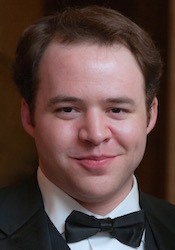Program Information
Evaluation of Four Data-Driven Respiratory Motion-Compensation Methods for Four-Dimensional Cone-Beam CT Registration and Reconstruction
M J Riblett1*, G E Christensen2, G D Hugo1, (1) Virginia Commonwealth University, Richmond, VA, (2) University of Iowa, Iowa City, IA
Presentations
TH-CD-303-7 (Thursday, July 16, 2015) 10:00 AM - 12:00 PM Room: 303
Purpose: To develop and compare four 4D-CBCT reconstruction methods that correct for respiratory motion and enhance image quality.
Methods: Four motion-compensation workflows were developed employing a combination of deformable image registration (DIR) and image reconstruction. Groupwise registration was used to simultaneously register all frames of a base Four-Dimensional Cone-Beam CT (4D-CBCT) FDK reconstruction to a reference frame, providing a 4D transformation. This 4D transformation expresses a respiratory motion model and was used to apply a deformation during the backprojection operation to create a motion-compensated reconstruction. Two variables were assessed: reference image of registration (fixed or mean frame) and inclusion or exclusion of the motion-compensated reconstruction step. Fixed frame registration refers to using an actual frame from the 4D image (end of inhalation) as the target image. Mean frame registration refers to using a per iteration-estimated average frame image instead. Image quality was assessed in one clinical case through tissue boundary sharpness, noise, and presence of view-aliasing artifact.
Results: Diaphragm edge sharpness (DES) was defined as the slope of the intensity gradient along the lung-diaphragm boundary. DES relative to the base 4D-CBCT reconstruction improved by 26.8% using fixed-frame registration alone; 15.5% using fixed-frame with motion-compensated reconstruction; decreased by 2.9% using mean-frame registration alone; and improved by 12.2% using mean-frame with motion-compensated reconstruction. Noise was reduced in soft tissue by 8.7% and 75.8% for the fixed-frame registration and registration with motion-compensation methods, respectively, and by 8.8% and 77.7% for the corresponding mean-frame methods. Reductions in undersampling artifacts were visible for all four methods relative to the base reconstruction while retaining higher frequency spatial details (i.e. blood vessels).
Conclusion: A data-driven approach combining groupwise registration and motion-compensation has the potential to improve 4D-CBCT image quality. Adding motion compensation after groupwise registration reduced sharpness somewhat but resulted in reduced noise and structural artifacts.
Funding Support, Disclosures, and Conflict of Interest: This work was supported by the National Cancer Institute of the National Institutes of Health under Award Number R01CA166119. The authors have no conflicts of interest.
Contact Email:


